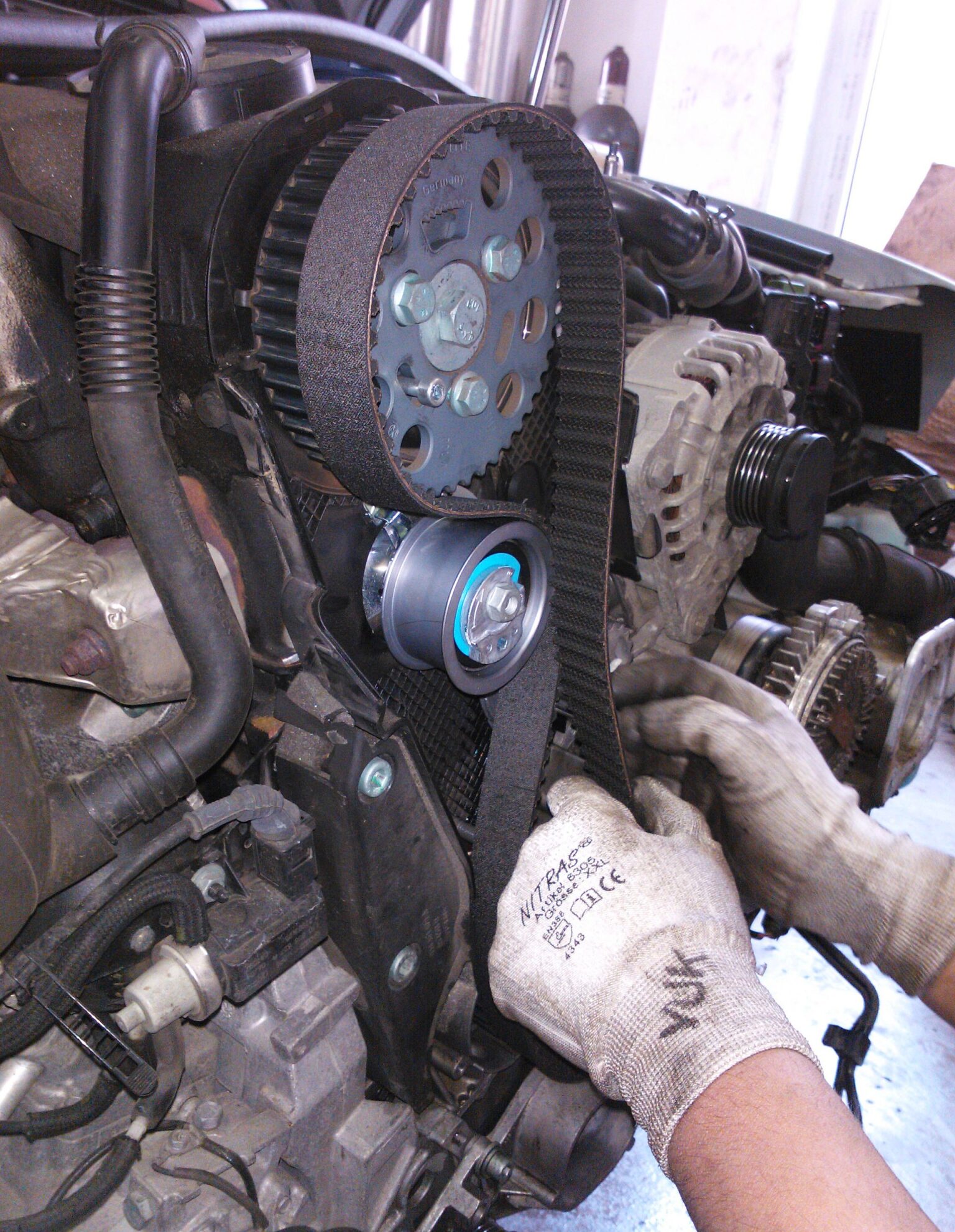The timing belt or chain in a car’s engine is a critical component responsible for synchronizing the rotation of the crankshaft and camshaft. This synchronization ensures that the engine’s valves open and close at the correct times during the combustion cycle, allowing for smooth and efficient operation. While both timing belts and chains serve the same purpose, they differ in their materials, construction, and maintenance requirements. Here, we explore the different types of timing belts and chains commonly found in cars:
Timing Belts:
- Rubber Timing Belts:
Rubber timing belts are the most common type found in modern cars. They are typically made from a durable rubber compound reinforced with fibers such as fiberglass or Kevlar. Rubber timing belts are lightweight, quiet, and cost-effective, making them a popular choice for many manufacturers. - High-Performance Timing Belts:
High-performance timing belts are designed to withstand higher temperatures and speeds than standard rubber belts. They often feature specialized materials such as aramid fibers or synthetic rubber compounds that offer increased durability and resistance to wear and tear. High-performance timing belts are commonly used in performance-oriented vehicles and racing applications. - Synchronous Timing Belts:
Synchronous timing belts, also known as toothed or cogged belts, feature teeth along their inner surface that mesh with corresponding grooves on the pulleys. This toothed design ensures precise timing and prevents slippage, making synchronous timing belts ideal for high-precision applications.
Timing Chains:
- Metal Timing Chains:
Metal timing chains are typically made from steel and are known for their durability and longevity. Unlike timing belts, which are prone to stretching and wear over time, metal timing chains are less susceptible to damage and can last the life of the engine with proper maintenance. Metal timing chains are commonly found in heavy-duty and high-performance engines. - Roller Timing Chains:
Roller timing chains feature small rollers or bearings attached to the links, reducing friction and wear between the chain and the sprockets. This design helps improve efficiency and longevity while minimizing noise and vibration. Roller timing chains are often used in high-performance and racing engines where reliability and precision are paramount.
Factors to Consider:
- Maintenance Requirements:
Timing belts typically require replacement at regular intervals, usually every 60,000 to 100,000 miles, depending on the manufacturer’s recommendations. In contrast, timing chains generally require less maintenance and can last the life of the engine with proper care. - Cost:
Timing belts are generally more affordable to manufacture and replace than timing chains. However, the cost of replacement can vary depending on the vehicle’s make and model, as well as the complexity of the installation process. - Noise and Vibration:
Timing belts tend to operate more quietly and smoothly than timing chains due to their design and materials. However, advancements in timing chain technology, such as roller chains, have helped reduce noise and vibration in modern engines.
Understanding the different types of car timing belts and chains is essential for maintaining the reliability and performance of your vehicle. Whether you have a rubber timing belt in your daily commuter or a metal timing chain in your high-performance sports car, ensuring proper maintenance and timely replacement can help prevent costly repairs and keep your engine running smoothly for years to come.











